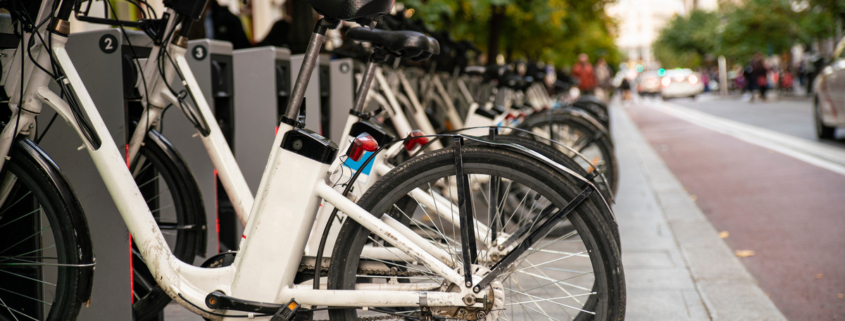E-Bike vs. Traditional Bicycle Accident Claims: What’s the Difference?
The rise of electric bicycles has transformed urban transportation, offering riders an efficient and eco-friendly way to navigate busy streets. However, with this growing popularity comes increased accident risks and unique legal considerations that differ significantly from traditional bicycle accidents.
Understanding these differences is crucial for anyone involved in an e-bike accident, as the legal landscape surrounding electric bicycles continues to evolve. Younglove Law Group has extensive experience handling both traditional bicycle and e-bike accident claims, helping injured riders navigate the complex legal issues that arise from these emerging transportation technologies.
Legal Classification and Regulation Differences
E-bikes and traditional bicycles are subject to different legal frameworks, which can significantly impact accident claims. Traditional bicycles are generally regulated under basic traffic laws, with riders expected to follow the same rules as other vehicles on the road.
E-Bike Classifications and Requirements
California law classifies e-bikes into three distinct categories based on their speed capabilities and motor assistance features. Class 1 e-bikes provide pedal assistance only and cannot exceed 20 mph with motor assistance. Class 2 e-bikes can be powered solely by the motor up to 20 mph. Class 3 e-bikes provide pedal assistance up to 28 mph and require additional safety equipment.
These classifications affect where e-bikes can be ridden, what safety equipment is required, and how accidents are investigated. Class 3 e-bikes, for example, are prohibited from certain bike paths and require riders to wear helmets regardless of age.
Licensing and Insurance Implications
Traditional bicycles typically do not require licensing or insurance coverage. E-bikes, depending on their classification and local regulations, may have different requirements that can affect accident claims. Some jurisdictions treat higher-powered e-bikes more like motorcycles than bicycles, which can impact liability determinations and available insurance coverage.
Insurance Coverage Complications
Insurance coverage for e-bike accidents can be significantly more complicated than traditional bicycle claims. Many standard homeowners or renters insurance policies that cover traditional bicycle accidents may exclude e-bikes, particularly higher-powered models.
Determining Applicable Coverage
Some insurance companies treat e-bikes as motor vehicles, which could trigger automobile insurance coverage requirements. Others may classify them as bicycles, making them subject to different coverage limitations and exclusions. This classification uncertainty can create gaps in coverage or disputes over which policy applies.
The type of e-bike involved in the accident can also affect insurance coverage. Class 1 e-bikes may be treated more like traditional bicycles, while Class 3 e-bikes might be subject to motorcycle insurance requirements in some jurisdictions.
Third-Party Liability Issues
When e-bike riders are injured by motor vehicles, the same liability principles generally apply as with traditional bicycle accidents. However, the enhanced capabilities of e-bikes may affect fault determinations, particularly if the e-bike was traveling at higher speeds than a traditional bicycle would achieve.
Product Liability Considerations
E-bike accidents may involve product liability claims that are not present in traditional bicycle cases. Defective batteries, malfunctioning motors, or faulty electrical systems can cause accidents or contribute to injury severity.
Manufacturing Defects and Design Issues
E-bikes contain complex electrical and mechanical systems that can fail, potentially causing accidents. Battery fires, sudden motor shutoffs, or brake failures specific to e-bike systems can create unique liability issues against manufacturers, distributors, or retailers.
These product liability claims can provide additional sources of compensation beyond traditional negligence claims against other parties involved in the accident. However, they also require specialized investigation and evidence gathering to establish defects and causation.
Maintenance and Modification Factors
The complexity of e-bike systems means that improper maintenance or aftermarket modifications can contribute to accidents. Determining whether mechanical failures resulted from manufacturing defects, inadequate maintenance, or unauthorized modifications requires thorough investigation by qualified experts.
Evidence Collection and Case Development
E-bike accident cases often require different types of evidence compared to traditional bicycle accidents. Electronic data from the bike’s systems, including speed recordings, motor assistance levels, and battery status, can provide crucial information about the accident circumstances.
Preservation of this electronic evidence is critical, as it can be lost or overwritten if not properly secured immediately after an accident. Additionally, the technical complexity of e-bike systems may require expert witnesses with specialized knowledge to interpret evidence and explain system operations to judges and juries.
Physical evidence from the e-bike itself, including the condition of electrical components and mechanical systems, must be carefully preserved and analyzed. This evidence can help establish whether equipment failures contributed to the accident or affected the severity of injuries.
Get Experienced Legal Representation
E-bike accident claims present unique challenges that require experienced legal representation familiar with both traditional bicycle law and emerging e-bike regulations. The attorneys at Younglove Law Group stay current with evolving transportation technologies and their legal implications, ensuring our clients receive comprehensive representation that addresses all aspects of their claims.
We understand the complexities involved in e-bike accident cases and work with qualified experts to investigate all potential sources of liability and compensation. Our team has recovered over $50 million for injured clients throughout California and knows how to navigate the unique challenges presented by e-bike accidents. We handle all cases on a contingency fee basis, which means you pay no attorney fees unless we successfully recover compensation for you. Contact Younglove Law Group today at (949) 691-3660 to discuss your e-bike accident case with attorneys who understand the evolving legal landscape surrounding electric bicycle accidents. Get in touch with our experienced team to learn how we can protect your rights and pursue the compensation you deserve.




